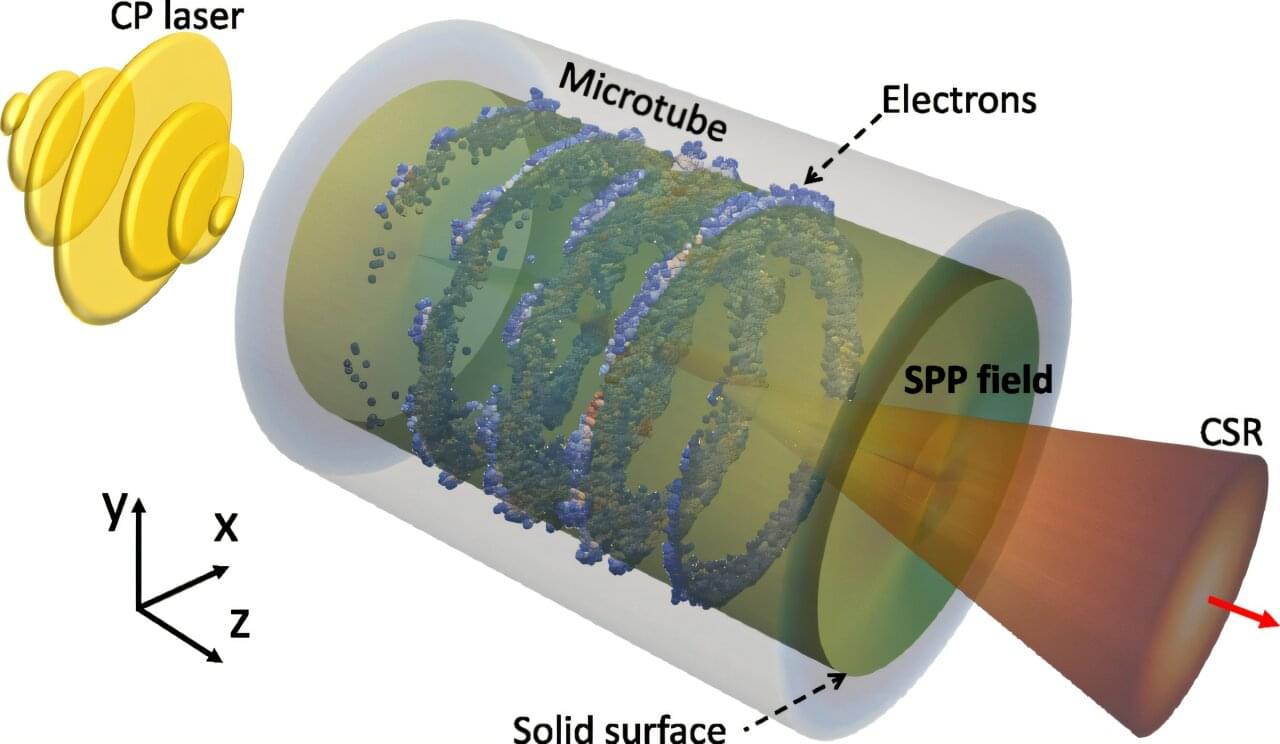A particle accelerator that produces intense X-rays could be squeezed into a device that fits on a table, my colleagues and I have found in a new research project.
The way that intense X-rays are currently produced is through a facility called a synchrotron light source. These are used to study materials, drug molecules and biological tissues. Even the smallest existing synchrotrons, however, are about the size of a football stadium.
Our research, which is published in the journal Physical Review Letters, shows how tiny structures called carbon nanotubes and laser light could generate brilliant X-rays on a microchip. Although the device is still at the concept stage, the development has the potential to transform medicine, materials science and other disciplines.
